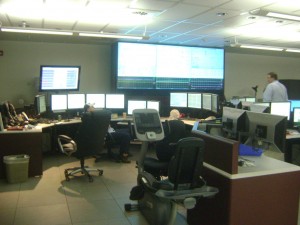Methodology & Tools
UCDS has had an interesting month, which included our tradition of spending Thanksgiving in Sedona, for good food, relaxation and visiting nature. A few hikes in the Sedona country side which is very beautiful and good for the soul.
We had a few firsts in November. We introduced our High Performance HMI ladder assessment gap analysis on a refinery project in Houston. It provided a very constructive methodology to review the HMI and collect data as to the many design flaws and shortcomings of the installed graphics. It also provided a prioritized list of improvements, while capturing good practices or unique and useful design ideas incorporated in the existing design.
We conducted a Management of Organizational Change for a refinery in the process of moving their control rooms into a single centralized control room. They had the usual concerns regarding loss of face to face contact between the field operators and the process control console operators, and the Chief or Lead operators and the console operator’s. We always recommend that management do not just dismiss their concerns but understand them and mitigate these concerns as much as possible. They are real concerns and can impact the team working of the operators.
I always recommend learning from the successful implementation of remote operation centers, like the ones in the North Sea that have successfully moved their control rooms on-shore. They have exploited video conferencing and one of my favorite technologies “Smart Boards” used to help operators collaborate in real-time. The benefit of operators being able to share the same document in real-time in two different locations together with video conferencing is extremely valuable.
It is interesting operators always raise concerns about potential worst case scenarios and the loss of that face to face contact but during review of these scenarios we always discover that the console operator is abandoned for many important activities in the field and that moving the console operator into a centralized control room can improve team working and provide a more suitable environment for dealing with a very stressful situation.
We also went back to an old customer in Salt Lake City; they implemented a control room move from a very hazardous area to an area within the administration building. This is a very common move these days. The new control room was very nice but they had made some fundamental mistakes during construction and had not addressed issues regarding acoustics. Many customers take a Conceptual Design from us and try to save money by not investing in the Detail Design and nearly always they end up reworking and trying to fix design problems which can be very costly.
We also completed a staffing update as they were interested in further consolidations and bringing some of the units that were harder to bring into the control room. These units often are manned by a single operator who manages both the console and the field work. What we refer to as an inside/outside operator. It is quite a challenge as the operator cannot be in two places at once. We have learned over the last 50 years that having the operator part of the loop and not out of the loop doing other tasks is a better practice with computer control. Having dedicated field operators is again a best practice.
We initially did an Abnormal Situation Awareness and effective operations practices study and the company is interested in utilizing this tool on their other sites and we are preparing proposals for their next phase in moving towards best practices.
We have also completed another first for us; we completed a front-end study for a pipeline customer in Houston who is looking at compliance issues with the new DOT PHMSA Regulation.
We have developed tools to help pipeline customers with compliance and understanding of the regulation. We have a powerful alliance with EnerSys, DRoth and Production Excellence Inc. All these companies have a unique contribution to make in providing solutions for this industry together with over 200 years of experience and have specialized in elements of the regulation.
Please make a note that starting January 1, 2011 we will be selling copies of our Fatigue Awareness Booklet.


